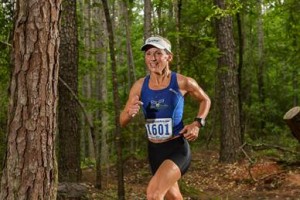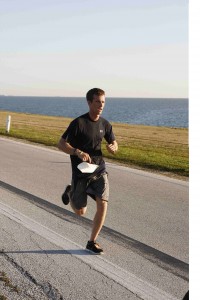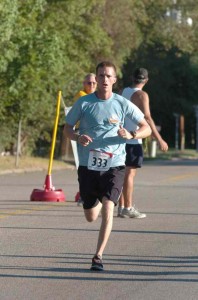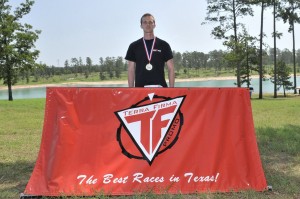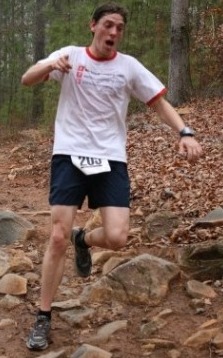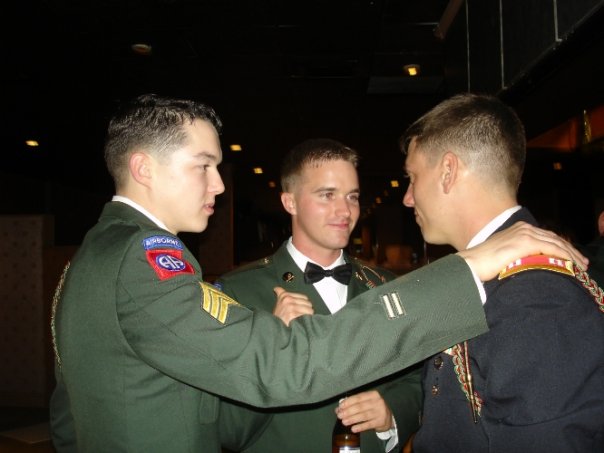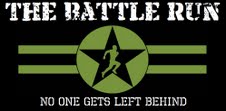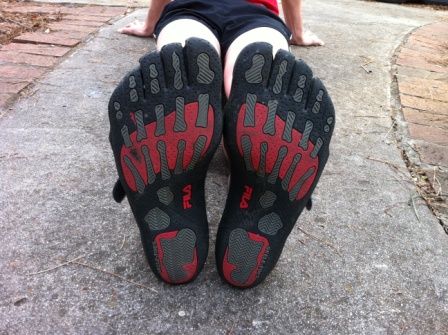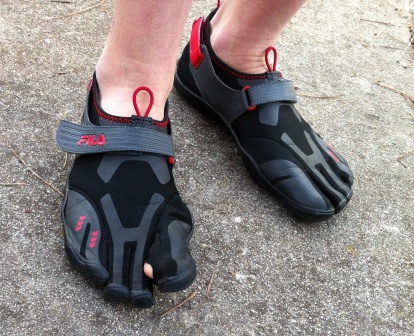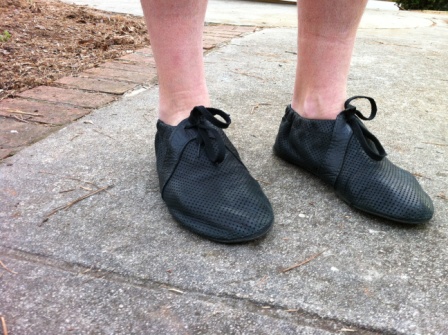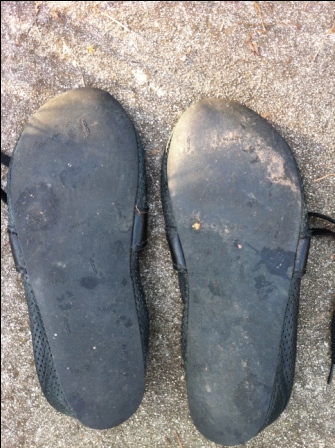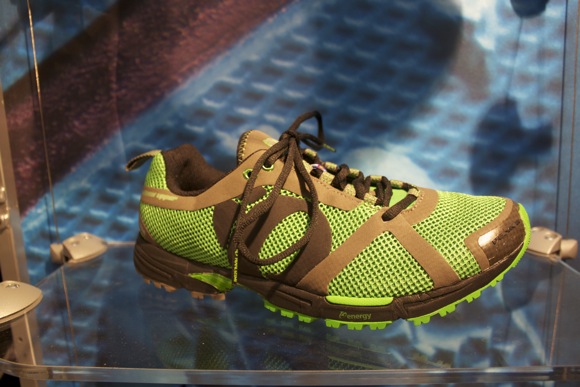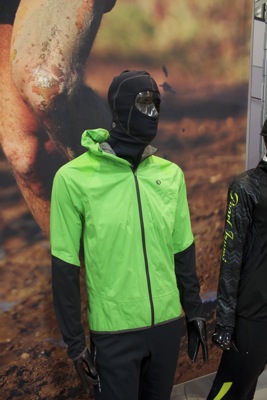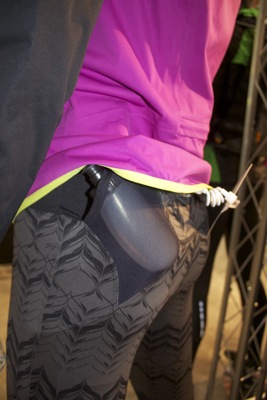This year’s Taos Ski Valley Up and Over Trail Run is scheduled for Saturday August, 25th at 9 am. Nancy Hobb’s tells us about her experience at the race. Think you can handle it? Then Register.
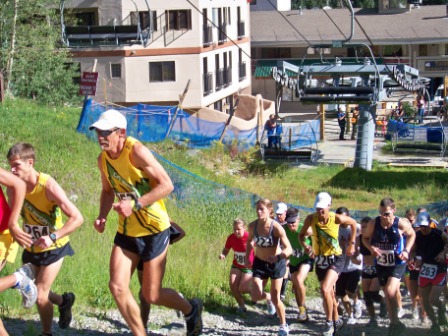 Imagine standing at a race start line, looking upward, and seeing only the first 1/4 mile of the race course because the trail bends around the back side of a ski mountain and the summit is so far above you that it is not visible from the base of the mountain.
Imagine standing at a race start line, looking upward, and seeing only the first 1/4 mile of the race course because the trail bends around the back side of a ski mountain and the summit is so far above you that it is not visible from the base of the mountain.
It is with trepidation perhaps, or maybe excitement, or even dread, to consider a climb of more than 2,600 feet in three miles before reaching the halfway point in a race course. Once the initial shock is over—the climb of course—it’s all downhill.
Getting back to the climb…think rocky, unstable footing, no shade, lack of oxygen, gut-busting steepness, heavy breathing and even some gasps and groans from the effort. Oh, but the views! Incredible if taking the time to enjoy them. Me, I was dizzy from the elevation gain and had no plans to stop. Why? Competition. There were two women ahead of me. A top-three place finish was great considering how I was feeling on the uphill, yet I knew if I could just maintain, I could pick up time on the descent and maybe make up some time and a place…or two.
Before the race I estimated about 12-14 minute miles on the uphill, 7 minutes per mile on the descent. I figured this after looking at a tiny ski-trail map of the Taos Ski area online and judging how long it took me a few weeks prior to run to the top of Vail Mountain on a similar elevation gain over three miles.
For me, it’s a bit about planning. Some people don’t care about the course, the terrain, or the competition, they just show up and run. I like to know all of these elements of the race plus what the weather is going to be on race morning, where the restrooms are, what the trail looks like just beyond the start line, what the approach to the finish line looks like, and everything in between. If possible, I like to run part, or all of the course before I race. Certainly not practical when arriving the night before the race.
Of the 31 runners on race morning, Saturday, August 25, for the Taos Ski Valley Up and Over 10k Trail Run, only a few decided to stand on the start line. Trepidation perhaps. Starting at 9,207 feet with 2,612 feet of elevation gain looming. Trepidation for sure, if not dread.
We got some last minute instructions about the course and were informed that there would be no countdown to the start, we were to just “go” after we heard a gun shot. Of course no one knew when the gun shot would come so we nervously waited with our fingers on our chronographic watches. Somehow I was in second place right from the start and I was taking it easy. Only one fellow took off in the lead and he, like many rabbits, became a turtle as the race went on. I made the first switchback turn and slowly approached the second before a few men passed me. A woman I spoke with at the start then surged past me in the first 1/2 mile. Her name was “Tas” I later learned and she had run the race last year, in the first year of the event. At the start she told me that it took her about 1:10 to 1:12 to race it—so I guessed she was probably last year’s winner since the organizer told me the women’s winning time for 2006 was 1:12. She would be my competition along with another woman I saw warming up at the start who just “looked fast.”
I settled into what I felt was a comfortable, yet oxygen-deprived, 12+ minute pace and a solid top-10 position which I hoped to keep up for the duration of the climb. Consistent pace is what I suggest to runners for this type of event. “Get into a gear that you know you can sustain for the duration of a climb,” is my best advice.
There would be three aid stations on the course, one halfway to the top, another at the summit, and a third at about the 4.5 mile point. When I looked at my watch and saw 25 minutes at the first aid station, I knew that my 12 minute pace was a fleeting dream and I was hoping now to go under 50 minutes on the climb.
The second woman passed me somewhere along the climb before that first aid station, she was the one who “looked fast” as she warmed up at the start. I could see her just ahead of me for the rest of the climb and I figured if I could just keep her in my sights, I could catch her — just maybe — on the descent. Considering how I was feeling toward the top—dizzy, unsteady, depleted, tired—that dream was in jeopardy of becoming rather distant as well. I managed a sub 50 minute ascent so that invigorated me…sort of.
It is amazing how cresting the top of a climb can change your attitude rather quickly. Just three miles to go and all downhill. This is my kind of running.
Tas was right, it was steep…and rocky. The speedy second-place woman was just ahead of me tiptoeing down the mountain. I blasted past her and she yelled out, “You go sister!” Inspiration for sure.
The descent was my strength, but the pounding was pretty intense and the footing was a bit treacherous in spots. I even had to slow down in several sections and amend my seven-minute pace accordingly. I passed the final water stop and knew I still had a mile or so to go. It was fairly solitary running, much like many trail races that have small fields and are also rather challenging. I saw one other runner ahead of me on the trail whom I thought I would catch, but didn’t, and heard no one behind me.
There were no spectators on course save for the aid stations and a few supporters who hiked up from the finish line to cheer on their friends, which also adds to the solitary nature of trail racing. When I saw some supporters near the finish line they urged me on saying that I only had 1/2 mile to the finish line. It was a bit longer than that, but close enough to ramp up my pace a bit.
I crossed the line in 1:13:05, good enough for second woman and sixth overall. Pleased to be in the top ten, second among the women, and equally pleased that we top-three women were all in our 40s.
The race awards ceremony started after everyone had crossed the finish line and post-race chatter was well underway. Every participant received a coupon for lunch with their race entry. Lunch, along with a cute T-shirt and some great swag made the nearly four-hour drive from Colorado Springs more than worthwhile. Add great volunteer support, and this low-key, small town event is a must-do mountain race for your August racing calendar.
Article by Nancy Hobbs from www.trailrunner.com


